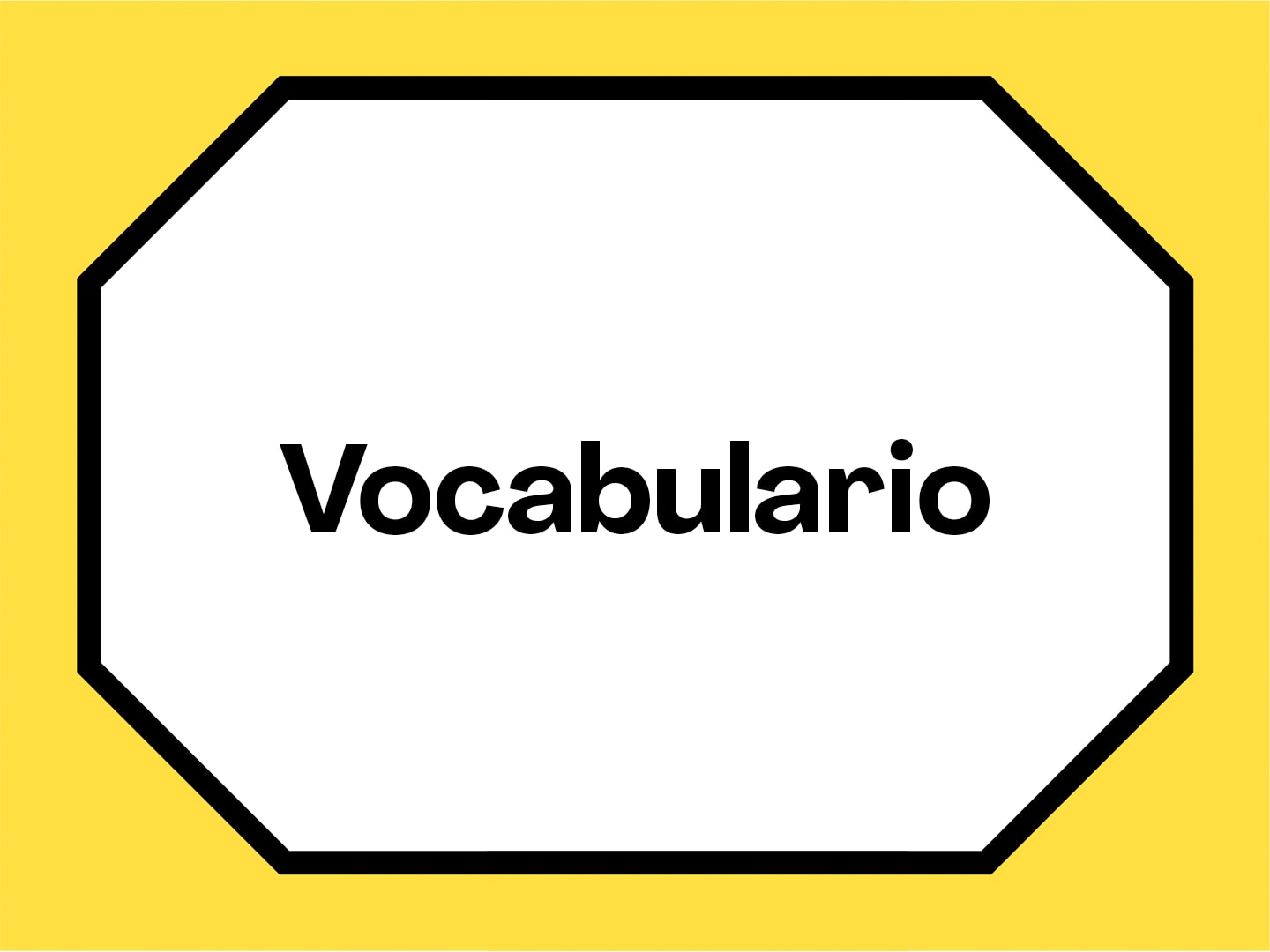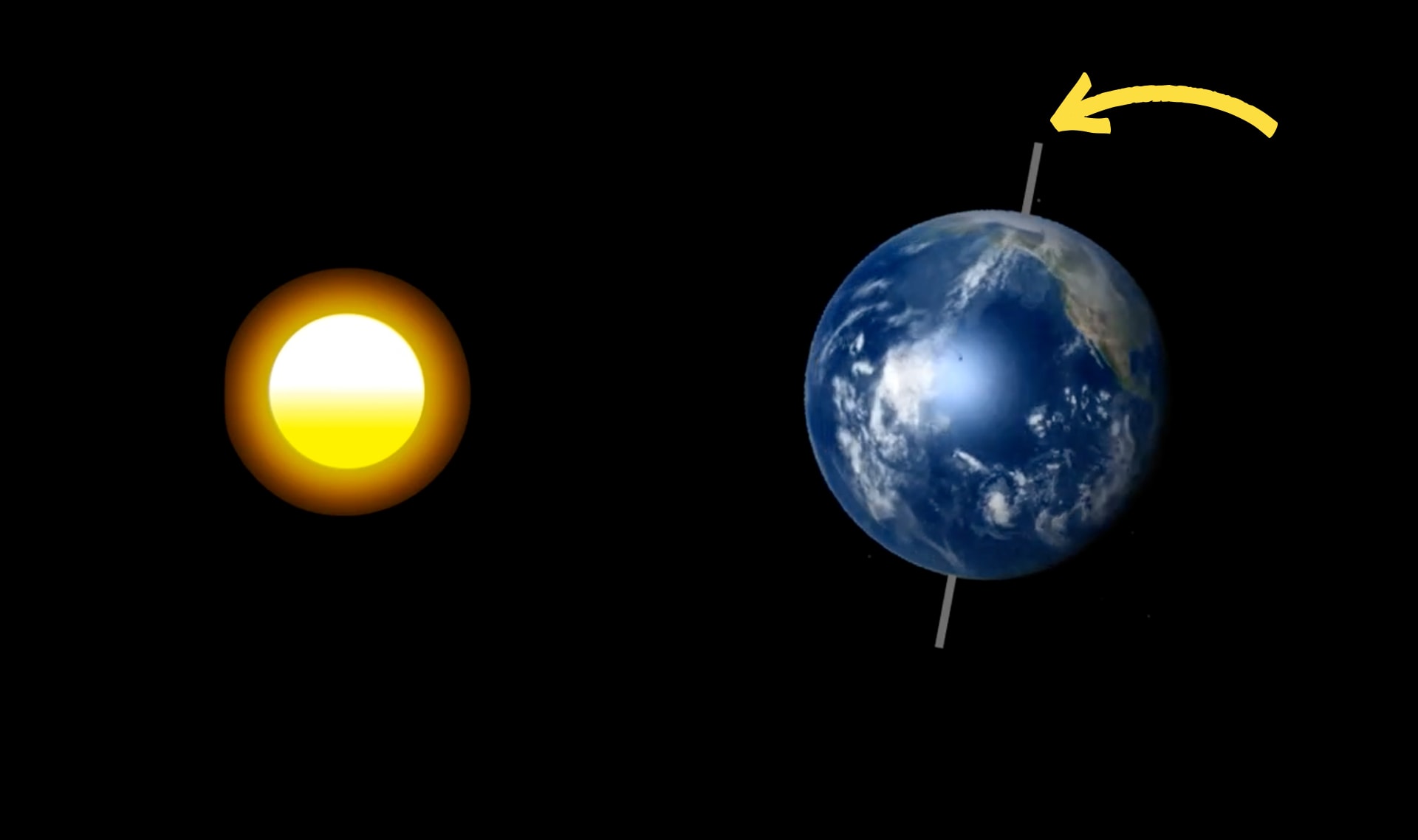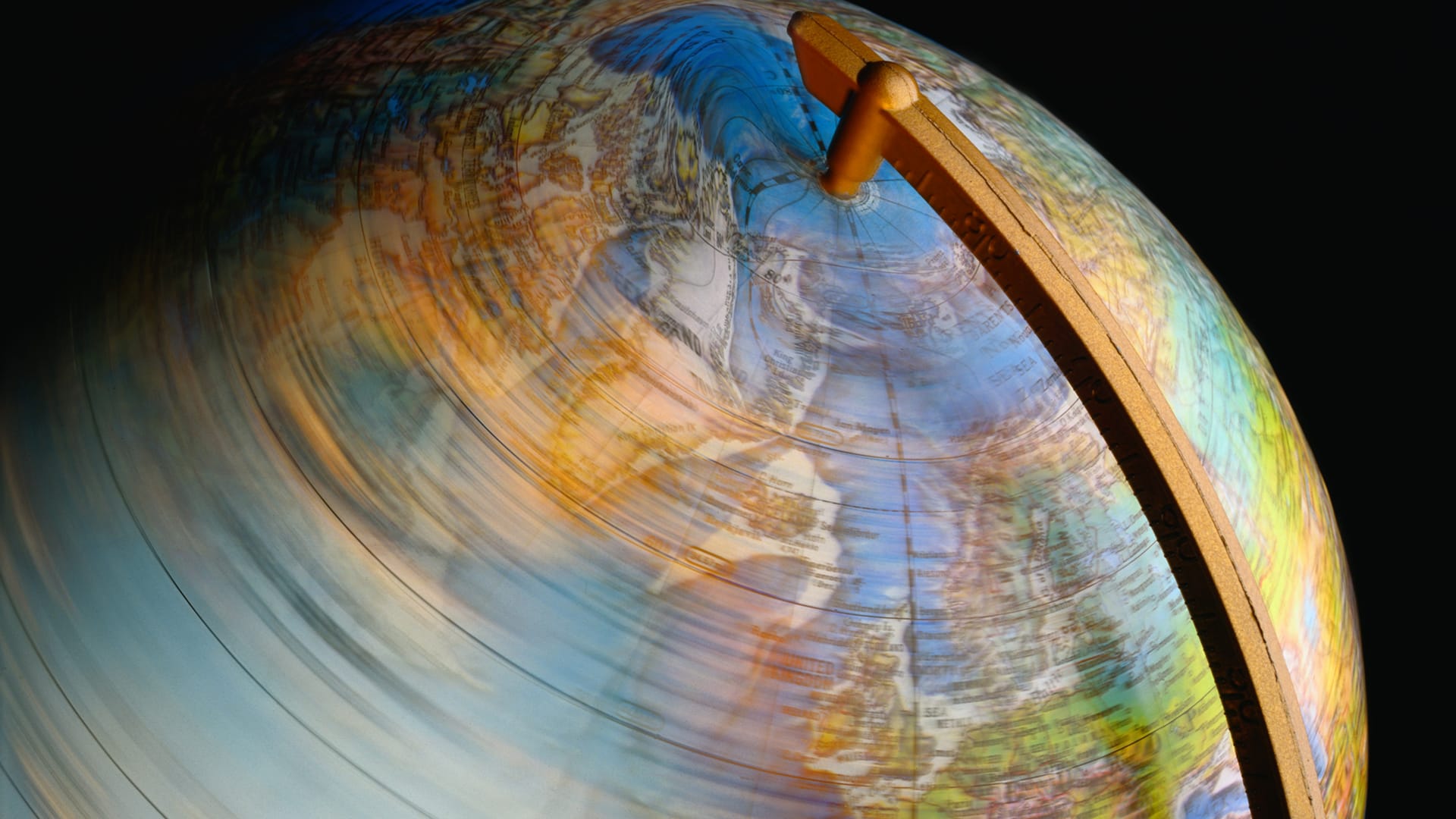Scroll for prep

Please wait…
This video is having trouble loading. You may have lost your Internet connection.
Step 1: Click to Reload this page
Step 2: Click to
Try our other video player
Step 3: Contact your teacher if trouble persists.
Or,
dismiss this message.
CONVERSEMOS:
¿Cómo sabemos que la Tierra es la que está girando y no el Sol?

Please wait…
This video is having trouble loading. You may have lost your Internet connection.
Step 1: Click to Reload this page
Step 2: Click to
Try our other video player
Step 3: Contact your teacher if trouble persists.
Or,
dismiss this message.
CONVERSEMOS:
¿Qué tan rápido se mueve la Tierra? (¿A cuántos kilómetros por hora?)

Please wait…
This video is having trouble loading. You may have lost your Internet connection.
Step 1: Click to Reload this page
Step 2: Click to
Try our other video player
Step 3: Contact your teacher if trouble persists.
Or,
dismiss this message.

Please wait…
This video is having trouble loading. You may have lost your Internet connection.
Step 1: Click to Reload this page
Step 2: Click to
Try our other video player
Step 3: Contact your teacher if trouble persists.
Or,
dismiss this message.
Paso
01/20
01/20
Encuentra un compañero o compañera con quien trabajar.

Please wait…
This video is having trouble loading. You may have lost your Internet connection.
Step 1: Click to Reload this page
Step 2: Click to
Try our other video player
Step 3: Contact your teacher if trouble persists.
Or,
dismiss this message.
Paso
02/20
02/20
Obtén estos materiales.

Please wait…
This video is having trouble loading. You may have lost your Internet connection.
Step 1: Click to Reload this page
Step 2: Click to
Try our other video player
Step 3: Contact your teacher if trouble persists.
Or,
dismiss this message.
Paso
03/20
03/20
Colorea el Sol de amarillo.

Please wait…
This video is having trouble loading. You may have lost your Internet connection.
Step 1: Click to Reload this page
Step 2: Click to
Try our other video player
Step 3: Contact your teacher if trouble persists.
Or,
dismiss this message.
Paso
04/20
04/20
Corta a lo largo de las líneas punteadas. Te sobrarán dos tiras
de papel. Ponlas a un lado.
de papel. Ponlas a un lado.

Please wait…
This video is having trouble loading. You may have lost your Internet connection.
Step 1: Click to Reload this page
Step 2: Click to
Try our other video player
Step 3: Contact your teacher if trouble persists.
Or,
dismiss this message.
Paso
05/20
05/20
Pongan sus dos mapas uno al lado del otro. Ubiquen dónde viven.
Dibujen un círculo para marcar su ubicación.
Dibujen un círculo para marcar su ubicación.

Please wait…
This video is having trouble loading. You may have lost your Internet connection.
Step 1: Click to Reload this page
Step 2: Click to
Try our other video player
Step 3: Contact your teacher if trouble persists.
Or,
dismiss this message.
Paso
06/20
06/20
Coloca el mapa con el círculo que dibujaste debajo del otro mapa.
Detén las dos hojas contra la luz y encuentra el círculo. Usa tu crayón
para dibujar otro círculo en ese lugar.
Detén las dos hojas contra la luz y encuentra el círculo. Usa tu crayón
para dibujar otro círculo en ese lugar.

Please wait…
This video is having trouble loading. You may have lost your Internet connection.
Step 1: Click to Reload this page
Step 2: Click to
Try our other video player
Step 3: Contact your teacher if trouble persists.
Or,
dismiss this message.
Paso
07/20
07/20
Gira los dos mapas de esta manera. Pon una tira de papel sobre
las dos cajas marcadas con la letra A, así. Pégalas usando cinta
adhesiva o calcomanías. Haz lo mismo con las "B."
las dos cajas marcadas con la letra A, así. Pégalas usando cinta
adhesiva o calcomanías. Haz lo mismo con las "B."

Please wait…
This video is having trouble loading. You may have lost your Internet connection.
Step 1: Click to Reload this page
Step 2: Click to
Try our other video player
Step 3: Contact your teacher if trouble persists.
Or,
dismiss this message.
Paso
08/20
08/20
Agarra los mapas así y detenlos con el mapa que tiene tu
ubicación hacia adelante. Mete la cabeza entre los dos mapas.
ubicación hacia adelante. Mete la cabeza entre los dos mapas.

Please wait…
This video is having trouble loading. You may have lost your Internet connection.
Step 1: Click to Reload this page
Step 2: Click to
Try our other video player
Step 3: Contact your teacher if trouble persists.
Or,
dismiss this message.
Paso
09/20
09/20
Colocate detrás de un escritorio o de una mesa donde tú y tu
compañero o compañera puedan dar vueltas.
compañero o compañera puedan dar vueltas.

Please wait…
This video is having trouble loading. You may have lost your Internet connection.
Step 1: Click to Reload this page
Step 2: Click to
Try our other video player
Step 3: Contact your teacher if trouble persists.
Or,
dismiss this message.
Paso
10/20
10/20
Pongan el modelo del Sol sobre la mesa entre los dos. Párense
viendo hacia el Sol, y luego platiquen sobre sus respuestas a
esta pregunta:
viendo hacia el Sol, y luego platiquen sobre sus respuestas a
esta pregunta:

Please wait…
This video is having trouble loading. You may have lost your Internet connection.
Step 1: Click to Reload this page
Step 2: Click to
Try our other video player
Step 3: Contact your teacher if trouble persists.
Or,
dismiss this message.
Paso
11/20
11/20
Giren ambos lentamente hacia la izquierda hasta que sus espaldas
estén frente al Sol. Solo muevan sus pies. No giren la cabeza. Luego
platiquen sobre esta pregunta:
estén frente al Sol. Solo muevan sus pies. No giren la cabeza. Luego
platiquen sobre esta pregunta:

Please wait…
This video is having trouble loading. You may have lost your Internet connection.
Step 1: Click to Reload this page
Step 2: Click to
Try our other video player
Step 3: Contact your teacher if trouble persists.
Or,
dismiss this message.
Paso
12/20
12/20
Desafío #1: Gira lentamente para mostrarle a tu compañero o
compañera cómo sería el paso de tres días en la Tierra.
compañera cómo sería el paso de tres días en la Tierra.

Please wait…
This video is having trouble loading. You may have lost your Internet connection.
Step 1: Click to Reload this page
Step 2: Click to
Try our other video player
Step 3: Contact your teacher if trouble persists.
Or,
dismiss this message.
Paso
13/20
13/20
Conversemos:

Please wait…
This video is having trouble loading. You may have lost your Internet connection.
Step 1: Click to Reload this page
Step 2: Click to
Try our other video player
Step 3: Contact your teacher if trouble persists.
Or,
dismiss this message.
Paso
14/20
14/20
Desafío #2: Simula cómo gira la Tierra cuando el Sol sale donde vives.

Please wait…
This video is having trouble loading. You may have lost your Internet connection.
Step 1: Click to Reload this page
Step 2: Click to
Try our other video player
Step 3: Contact your teacher if trouble persists.
Or,
dismiss this message.
Paso
15/20
15/20
Esto fue lo que hicimos para simular el amanecer. Empieza donde
no puedas ver el Sol, ahí sería de noche para el lugar donde vives.
Luego, gira lentamente a la izquierda hasta que veas el Sol.
no puedas ver el Sol, ahí sería de noche para el lugar donde vives.
Luego, gira lentamente a la izquierda hasta que veas el Sol.

Please wait…
This video is having trouble loading. You may have lost your Internet connection.
Step 1: Click to Reload this page
Step 2: Click to
Try our other video player
Step 3: Contact your teacher if trouble persists.
Or,
dismiss this message.
Paso
16/20
16/20
Desafío #3: Vuele a simular la salida del Sol en donde vives.
¿Qué crees que la gente del lado opuesto del mundo está viendo?
¿Qué crees que la gente del lado opuesto del mundo está viendo?

Please wait…
This video is having trouble loading. You may have lost your Internet connection.
Step 1: Click to Reload this page
Step 2: Click to
Try our other video player
Step 3: Contact your teacher if trouble persists.
Or,
dismiss this message.
Paso
17/20
17/20
Esto fue lo que notamos. Cuando tu cara gira hacia el Sol
(el amanecer), tu espalda se está moviendo lejos del Sol (el atardecer).
(el amanecer), tu espalda se está moviendo lejos del Sol (el atardecer).

Please wait…
This video is having trouble loading. You may have lost your Internet connection.
Step 1: Click to Reload this page
Step 2: Click to
Try our other video player
Step 3: Contact your teacher if trouble persists.
Or,
dismiss this message.
Paso
18/20
18/20
Desafío #4: Gira para simular el amanecer en el otro lado del
mundo (de donde tu vives). Después regresen a sus asientos.
mundo (de donde tu vives). Después regresen a sus asientos.

Please wait…
This video is having trouble loading. You may have lost your Internet connection.
Step 1: Click to Reload this page
Step 2: Click to
Try our other video player
Step 3: Contact your teacher if trouble persists.
Or,
dismiss this message.
Paso
19/20
19/20
Imagina que has encontrado otro planeta en una galaxia lejana.
El planeta se llama Velozia. Platica sobre esta pregunta:
El planeta se llama Velozia. Platica sobre esta pregunta:

Please wait…
This video is having trouble loading. You may have lost your Internet connection.
Step 1: Click to Reload this page
Step 2: Click to
Try our other video player
Step 3: Contact your teacher if trouble persists.
Or,
dismiss this message.
Paso
20/20
20/20
Haz de cuenta que encontraste otro planeta llamado Globolento.
Platica sobre esta pregunta y luego ve el último video.
Platica sobre esta pregunta y luego ve el último video.

Please wait…
This video is having trouble loading. You may have lost your Internet connection.
Step 1: Click to Reload this page
Step 2: Click to
Try our other video player
Step 3: Contact your teacher if trouble persists.
Or,
dismiss this message.


planeta
1 de 5
un objeto grande y redondo que orbita una estrella en el espacio exterior

eje
2 de 5
una línea imaginaria que atraviesa el Polo Norte y el Polo Sur de la Tierra

Please wait…
This video is having trouble loading. You may have lost your Internet connection.
Step 1: Click to Reload this page
Step 2: Click to
Try our other video player
Step 3: Contact your teacher if trouble persists.
Or,
dismiss this message.
rotar
3 de 5
dar vueltas alrededor de un punto central, como lo hace la Tierra entorno a su propio eje

Please wait…
This video is having trouble loading. You may have lost your Internet connection.
Step 1: Click to Reload this page
Step 2: Click to
Try our other video player
Step 3: Contact your teacher if trouble persists.
Or,
dismiss this message.
modelo
4 de 5
una versión de mentiras de algo que los científicos usan cuando la cosa de verdad es algo demasiado grande, pequeño, o complicado para poder usarlo en sus estudios

Please wait…
This video is having trouble loading. You may have lost your Internet connection.
Step 1: Click to Reload this page
Step 2: Click to
Try our other video player
Step 3: Contact your teacher if trouble persists.
Or,
dismiss this message.
circunferencia
5 de 5
la distancia alrededor de un círculo



